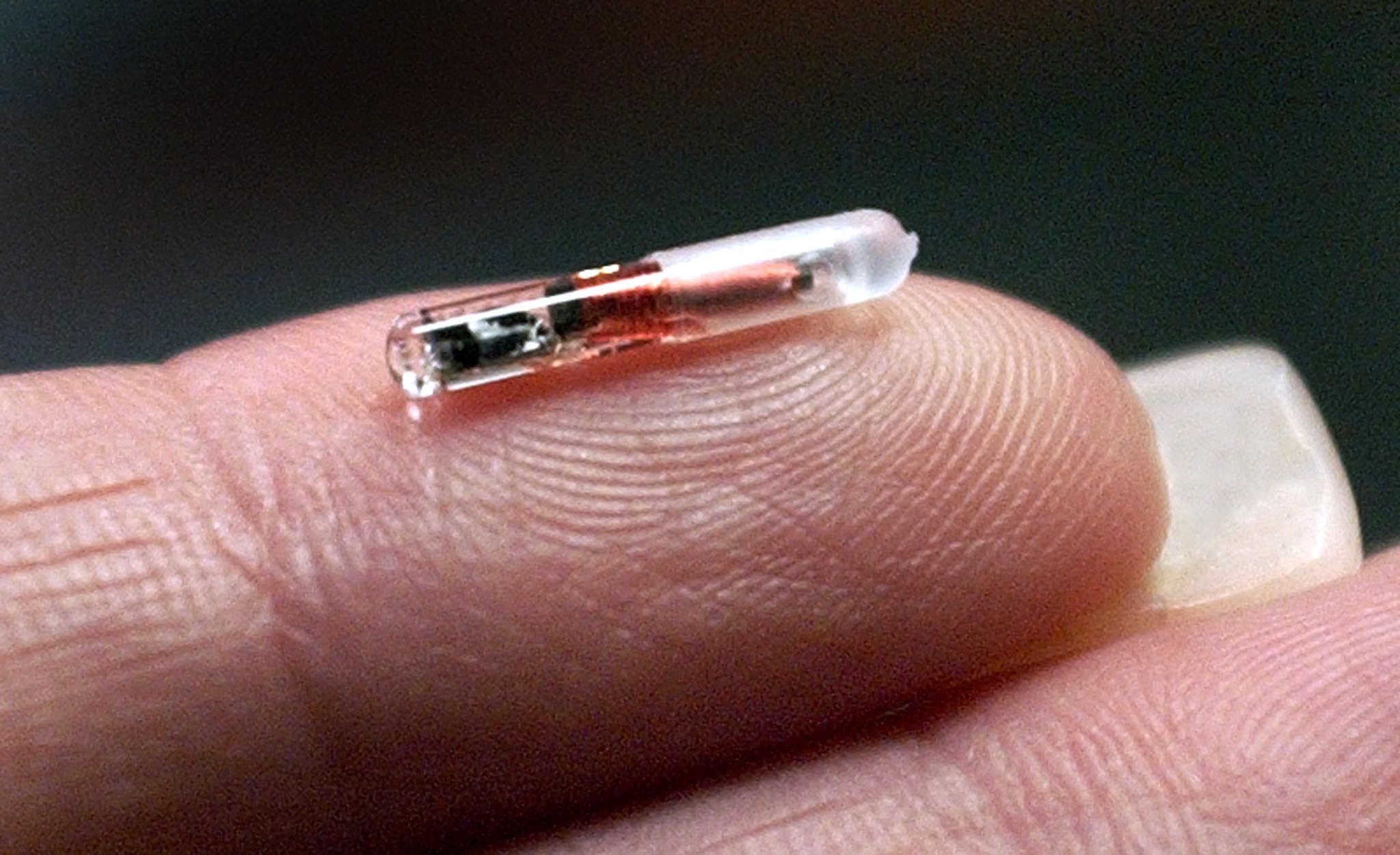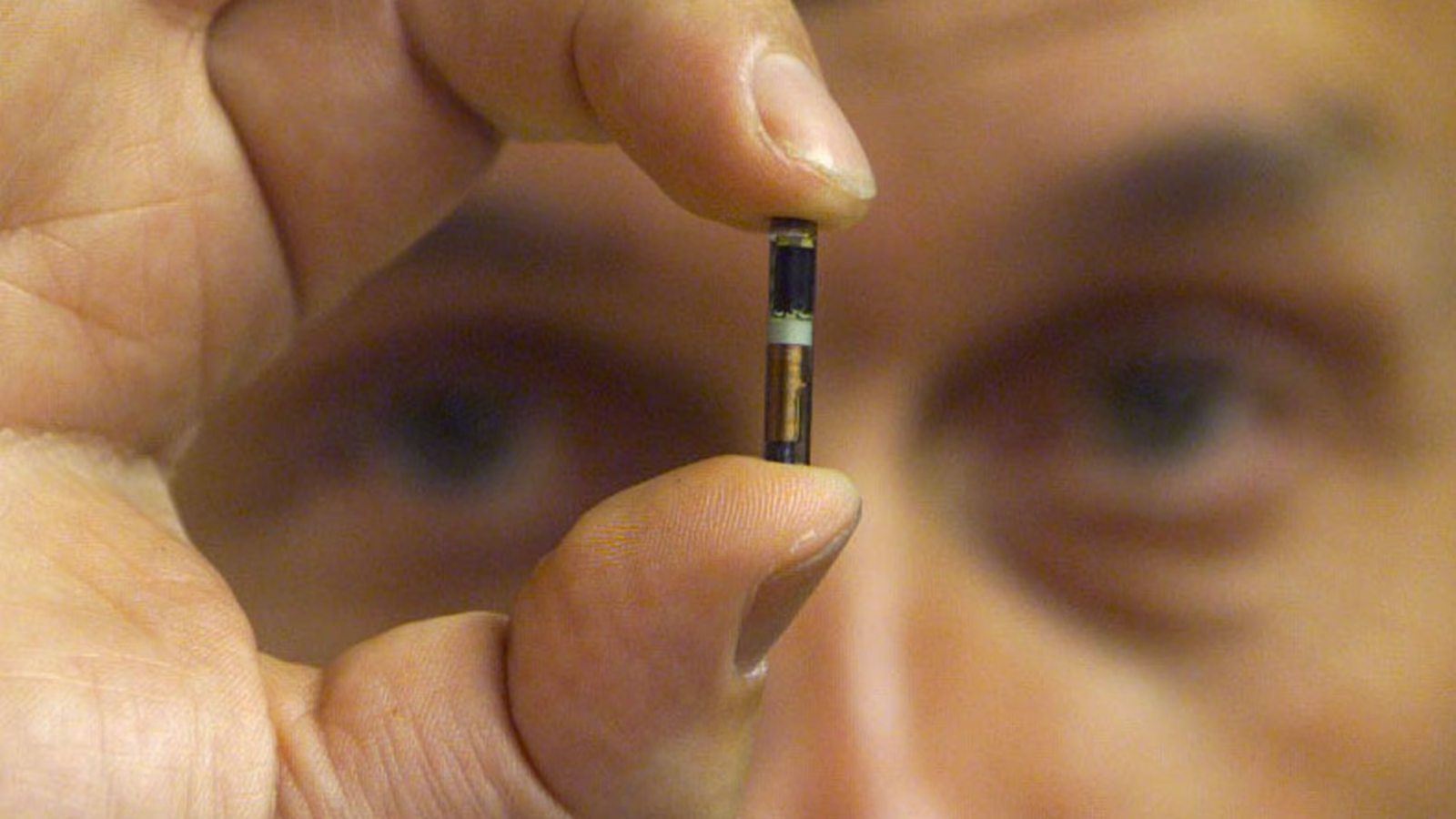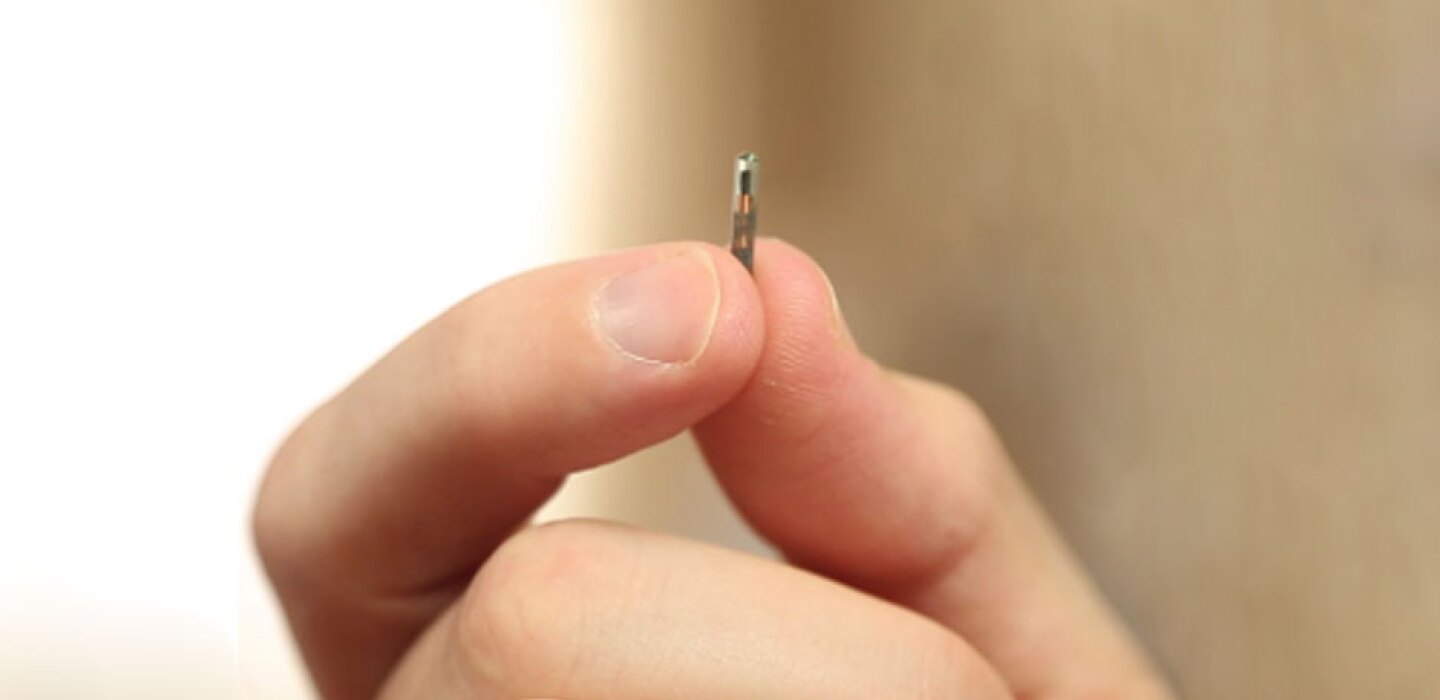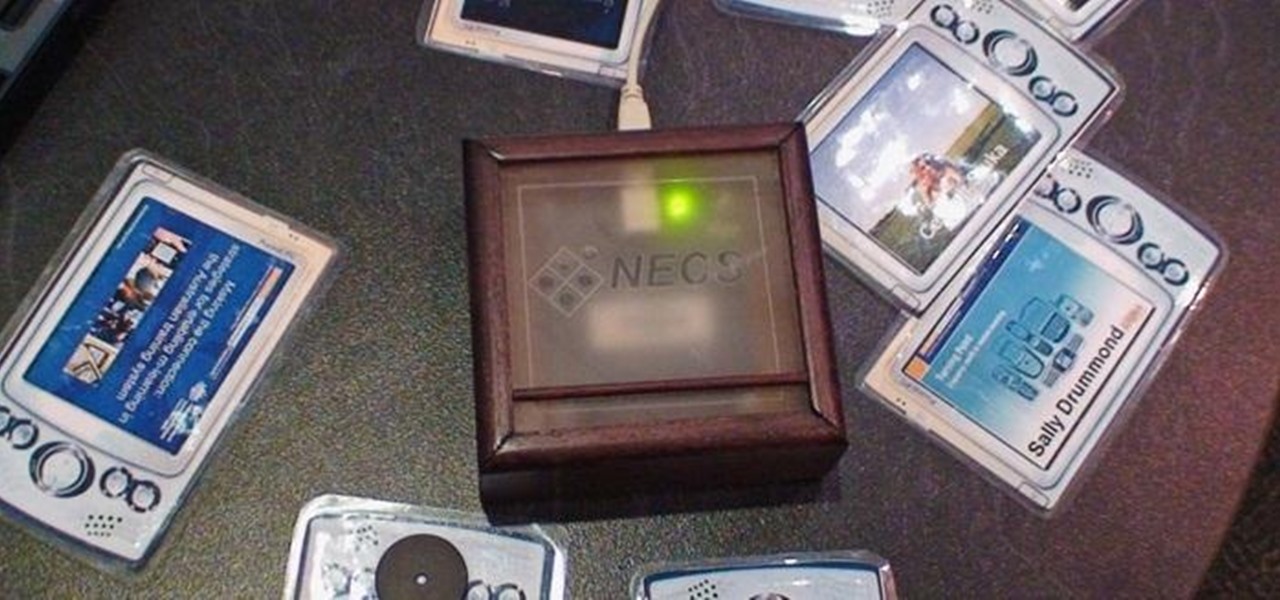Introduction
RFID, which stands for Radio Frequency Identification, is a technology that uses radio waves to automatically identify and track items. It involves the use of RFID chips, also known as tags or transponders, which are small electronic devices that can store and transmit information. These chips are commonly found in a wide range of applications, including access cards, passports, credit cards, and even in some consumer products.
While RFID technology offers numerous benefits, such as improved inventory management and enhanced security, there are cases where individuals may want to disable or deactivate the RFID chips embedded in their belongings. This could be due to concerns about privacy, tracking, or data security.
This article will explore various methods to disable an RFID chip, offering a range of options for those seeking to protect their personal information. It is important to note that disabling an RFID chip should only be done if you have a valid reason and are aware of the potential risks and legal considerations associated with doing so.
What is RFID?
RFID, or Radio Frequency Identification, is a technology that uses electromagnetic fields to identify and track tags or transponders, commonly known as RFID chips. These chips contain a microchip and an antenna, allowing them to communicate with RFID readers or scanners wirelessly.
RFID technology has gained widespread adoption in various industries due to its ability to enable quick and efficient identification and tracking of objects. RFID chips are used in a variety of applications, from inventory management and supply chain logistics to access control and contactless payment systems.
The functioning of RFID technology is fairly simple. When an RFID reader emits radio waves, the RFID chip within the range of the reader detects the radio wave signal and activates. Once activated, the chip transmits its unique identifier or other stored information back to the reader via radio waves. The reader then captures this information and processes it accordingly.
RFID chips can be categorized into two types: active and passive. Active RFID chips have an internal power source, such as a battery, which allows them to transmit a signal without relying on the reader’s power. Passive RFID chips, on the other hand, do not have an internal power source and rely solely on the reader’s electromagnetic field to power them and activate their communication.
RFID technology has revolutionized various industries, offering significant advantages over traditional barcode systems. It enables faster and more accurate data collection, improves automation and efficiency, and allows real-time tracking and monitoring of assets.
However, the widespread use of RFID technology has raised concerns about privacy and security. As RFID chips become more prevalent in consumer products, there is a growing interest in understanding how they work and how they can be deactivated or disabled if desired.
Why would someone want to disable an RFID chip?
There are several reasons why someone may want to disable or deactivate an RFID chip embedded in their belongings. These reasons can range from concerns about privacy and data security to a desire to prevent tracking or unauthorized access. Here are some common motivations behind disabling RFID chips:
- Privacy concerns: RFID technology enables the collection and transmission of personal information without direct contact. This raises concerns about potential privacy breaches, as RFID chips can be scanned without an individual’s knowledge or consent. Disabling the RFID chip can provide peace of mind and ensure that personal information remains private.
- Data security: RFID chips can store various types of information, including financial data and personal identification details. Hackers or malicious actors may attempt to access or manipulate this data for illicit purposes. Disabling the RFID chip can help mitigate the risk of unauthorized data access and protect sensitive information.
- Tracking avoidance: In certain situations, individuals may want to avoid being tracked by RFID technology. For example, some people may be concerned about being tracked by authorities, employers, or even marketing companies. Disabling the RFID chip can help maintain anonymity and prevent location tracking.
- Preventing unauthorized access: RFID chips are used in access control systems, such as key cards for buildings or vehicles. If an individual no longer wants to grant access to their belongings or premises, disabling the RFID chip can effectively prevent unauthorized entry or use.
- Counterfeit prevention: Disabling RFID chips in consumer products can help prevent counterfeiting or unauthorized duplication. By deactivating the chip, it becomes more challenging for counterfeiters to replicate the product and pass it off as genuine.
It is crucial to note that disabling an RFID chip should be done responsibly and within the bounds of the law. Some jurisdictions have specific regulations regarding the manipulation or deactivation of RFID technology. Therefore, it is essential to be aware of the legal considerations associated with disabling RFID chips in your region.
Methods to disable an RFID chip
There are various methods available to disable or deactivate an RFID chip embedded in an item. It’s important to note that some of these methods may permanently damage the chip or render it non-functional. Here are five common methods to consider:
- Physical Destruction: One of the most effective ways to disable an RFID chip is to physically destroy it. This can be done by damaging the chip using sharp tools such as a knife, scissors, or a hammer. However, it is essential to exercise caution when applying this method to avoid injury or damage to the surrounding object.
- Microwave: Another method to disable an RFID chip is by subjecting it to high levels of electromagnetic radiation, such as a microwave oven. Placing the item containing the chip inside a microwave for a short period can cause the chip to malfunction due to the intense radiation. However, there is a risk of damaging the surrounding object, and it is crucial to ensure that the item is microwave-safe.
- Freezing: Freezing an RFID chip is another technique that can potentially disable it. By subjecting the chip to extremely low temperatures, the internal components may become damaged, rendering the chip non-functional. However, this method may not be as reliable as others, and it is important to keep in mind that freezing may not work effectively on all types of RFID chips.
- Jamming Signals: Jamming signals is a method that involves flooding the RFID chip with a high level of radio frequency signals, effectively blocking its communication with RFID readers. This can be done using a specialized RFID jammer or by creating interference using other electronic devices. However, it is essential to be aware of the legality and potential impact on surrounding devices when using this method.
- Blocking Signals: One of the simplest methods to disable an RFID chip is by blocking its signals. This can be achieved by placing the item in a metal container or using specialized RFID-blocking materials, such as sleeves or wallets. These materials create a barrier that prevents the RFID reader from detecting the chip’s signal, effectively disabling it.
It is important to note that the effectiveness of these methods may vary depending on the type of RFID chip and its specific technology. Additionally, some of these methods may have legal implications, and it is crucial to ensure compliance with the relevant laws and regulations before attempting to disable an RFID chip.
Method 1: Physical Destruction
Physical destruction is one of the most straightforward methods to disable an RFID chip. By physically damaging the chip itself, you can render it non-functional and prevent it from transmitting or receiving data. Here are some ways to carry out physical destruction:
- Cutting or Puncturing: One common method of physically disabling an RFID chip is by cutting or puncturing it. You can use sharp tools such as a knife, scissors, or even a nail to penetrate the chip’s surface. However, it is important to exercise caution when using this method to avoid injury or damage to the surrounding object.
- Crushing or Hammering: Another way to physically destroy an RFID chip is by crushing or hammering it. This method involves applying significant force to the chip, causing it to break or shatter. You can use a hammer, pliers, or any other heavy object to achieve this. However, be careful not to damage the object containing the chip or other sensitive components.
- Heating and Melting: Heat can also be used to disable an RFID chip. By subjecting the chip to high temperatures, you can cause the internal components to melt or warp, rendering the chip non-functional. This can be done using a heat source such as a lighter or a blowtorch. However, extreme caution should be exercised to avoid fire hazards or damage to the object.
It is important to note that physical destruction methods may cause irreversible damage to the object or item containing the RFID chip. Therefore, before employing this method, carefully consider the implications and ensure that there are no negative consequences associated with disabling the chip. Additionally, be aware of any legal considerations or restrictions surrounding the destruction or tampering of RFID technology in your region.
Method 2: Microwave
Using a microwave to disable an RFID chip is a method that involves subjecting the chip to high levels of electromagnetic radiation. The intense radiation emitted by the microwave can potentially cause the chip to malfunction, rendering it non-functional. Here are the steps to carry out this method:
- Prepare the item: Place the item containing the RFID chip that you want to disable into a microwave-safe container. Ensure that the container is suitable for use in a microwave oven.
- Microwave the item: Put the container with the item into the microwave oven and close the door securely. Set the microwave to its highest power level and select a short duration for the heating cycle, typically 5-10 seconds.
- Monitor the process: Carefully observe the item while it is being microwaved. The intense radiation in the microwave can cause the RFID chip to malfunction or even completely fry. Be cautious not to overheat the object, as it may cause damage to the item itself.
- Check the functionality: After microwaving, remove the item from the microwave and allow it to cool down before checking the functionality of the RFID chip. Test the chip by bringing it near an RFID reader or scanner to see if it still functions. Chances are, the microwave radiation will have permanently disabled the chip.
It is important to note that microwaving an object with an RFID chip can have unintended consequences. The microwaves can potentially damage other electronic components or cause the item to overheat and pose a safety risk. Additionally, microwaving certain materials may lead to fire hazards or release harmful fumes. Always exercise caution and ensure that the item and the container are microwave-safe before attempting this method.
Lastly, it is crucial to be mindful of any legal implications associated with disabling or tampering with RFID technology in your region. Familiarize yourself with the laws and regulations governing the use and manipulation of RFID chips to avoid any potential legal issues.
Method 3: Freezing
Freezing an RFID chip is another method that some people believe can disable its functionality. By subjecting the chip to extremely low temperatures, there is a possibility of damaging the internal components and rendering the chip non-functional. Here’s how you can attempt this method:
- Prepare the item: Place the item containing the RFID chip that you want to disable in a sealable plastic bag or container. Ensure that the item is properly protected from moisture or condensation.
- Freeze the item: Place the bag or container with the item in the freezer and leave it for a prolonged period of time. Typically, freezing the item for 24 to 48 hours is recommended.
- Thaw the item: After the freezing period, remove the item from the freezer and allow it to thaw completely to room temperature. This will prevent any potential damage caused by rapid temperature changes.
- Check the functionality: Once the item has thawed, test the RFID chip by bringing it near an RFID reader or scanner to see if it still functions. It is important to note that while this method may work for some RFID chips, others may be resistant to freezing and may continue to function as intended.
It is important to note that freezing an RFID chip may not be as reliable or effective as other methods of disabling. The success rate may vary depending on the specific RFID chip and its construction. Some chips are designed to withstand extreme temperatures and may still function even after being frozen.
Furthermore, it is crucial to consider the potential risks associated with freezing an item. Certain materials or electronics may not react favorably to extreme temperatures, and the freezing process may result in damage or degradation of the item itself. Exercise caution and assess the suitability of the item for freezing before attempting this method.
Lastly, be aware of any legal considerations or regulations pertaining to the manipulation or deactivation of RFID technology in your region. Ensure that you comply with the applicable laws and regulations to avoid any legal issues.
Method 4: Jamming Signals
Jamming signals is a method used to disable an RFID chip by flooding it with a high level of radio frequency signals. This overwhelms the chip’s ability to communicate with RFID readers, effectively blocking its functionality. Here is how you can attempt this method:
- Obtain an RFID jammer: A specialized RFID jammer is typically required to carry out this method. These devices emit a strong and continuous radio frequency signal in the RFID frequency range, disrupting the communication between the chip and the reader.
- Place the jammer near the RFID chip: Position the jammer in close proximity to the item or object containing the RFID chip. The closer the jammer is to the chip, the better the chances of it effectively blocking the RFID signal.
- Activate the jammer: Turn on the jammer and allow it to emit the radio frequency signals. The jammer will flood the area with a strong signal, causing interference with the chip’s ability to communicate with RFID readers.
- Monitor the functionality: Test the functionality of the RFID chip by attempting to read it with an RFID reader while the jammer is active. If the chip is successfully jammed, the reader should not be able to detect or read the chip’s information.
It is important to note that jamming RFID signals may not be legal in all jurisdictions. The use of jamming devices is regulated to prevent interference with critical communication systems or unauthorized disruption of services. Research and understand the laws and regulations in your region before attempting this method.
Additionally, be considerate of the potential impact on other RFID systems or devices nearby. Jamming signals can interfere with legitimate RFID operations, including essential uses in industries such as logistics and healthcare. Use this method responsibly and avoid causing disruption to authorized systems.
Lastly, keep in mind that technology advances over time, and RFID manufacturers may implement measures to mitigate the effect of signal jamming. This method may become less effective as RFID technology evolves.
Method 5: Blocking Signals
Blocking signals is a method used to disable an RFID chip by preventing its communication with RFID readers. This method involves creating a physical barrier that blocks or attenuates the radio frequency signals used by the RFID system. Here is how you can attempt this method:
- Use an RFID-blocking material: Several materials are specifically designed to block or reduce the transmission of RFID signals. These materials often contain metal fibers or metallic layers that create a shield against electromagnetic waves.
- Wrap the item or use RFID-blocking accessories: Cover the item containing the RFID chip with the RFID-blocking material. You can use RFID-blocking sleeves, wallets, or pouches to create a protective barrier around the chip.
- Ensure complete coverage: It is crucial to ensure that the RFID-blocking material completely covers the RFID chip and that there are no gaps or openings where the signal could penetrate. This will effectively block the RFID signal and prevent it from being read by RFID readers.
- Test the functionality: After applying the RFID-blocking material, test the RFID chip by bringing it near an RFID reader or scanner. The reader should not be able to detect or read the chip’s information, indicating that the blocking material is effectively disabling the chip.
It is important to note that the effectiveness of RFID-blocking materials may vary depending on the material’s quality, thickness, and construction. Some materials may provide stronger shielding than others, so it’s essential to choose reliable and trusted RFID-blocking products.
Additionally, be aware that some RFID chips operate at different frequency ranges, and not all blocking materials may be suitable for all types of RFID chips. Understand the specific frequencies at which the RFID chip operates and select the appropriate blocking material accordingly.
Lastly, keep in mind that while this method can effectively block RFID signals, some RFID systems may implement advanced technologies, such as encryption or distance-based authentication, which may render the blocking method less effective. Stay informed about the latest advancements in RFID technology to ensure the best possible protection.
Potential Risks and Legal Considerations
Disabling an RFID chip comes with potential risks and legal considerations that should be taken into account. Before attempting any method to disable an RFID chip, it is important to be aware of these factors to make informed decisions:
- Damage to the item: Many methods of disabling RFID chips involve physical destruction, heating, or other techniques that can cause damage to the item itself. Consider the potential consequences and determine if the risk of damaging the item is acceptable.
- Effectiveness: Different RFID chips may vary in their vulnerability to disabling methods. While some methods may work effectively on certain chips, they may be ineffective or have limited success on others. It is important to understand the limitations of each method and assess the likelihood of success.
- Legal implications: Tampering with RFID technology may have legal consequences in your jurisdiction. Some regions have regulations in place regarding the manipulation or deactivation of RFID chips, particularly those used in official documents or sensitive applications. Research and familiarize yourself with the applicable laws to ensure compliance.
- Safety hazards: Certain methods, such as microwaving or using high-powered devices, can pose safety hazards. Fire, electric shocks, or other accidents may occur if proper precautions are not followed. Prioritize safety and exercise caution when attempting any method to disable an RFID chip.
- Unintended consequences: Disabling an RFID chip may have unintended consequences. For example, disabling an access card’s RFID chip may prevent access to secure areas or services. Consider the potential impact on your daily activities or future use of the item.
- Data loss or corruption: Depending on the method used, there is a risk of data loss or corruption on the RFID chip or associated systems. Once the chip is disabled, any data stored on it may be irretrievable. Consider if there is any valuable or sensitive information that may be lost or compromised during the process.
It is essential to approach the disabling of RFID chips responsibly and be aware of the potential risks and legal implications. If you have concerns or doubts, it is advisable to seek professional guidance or consult with relevant authorities to ensure compliance and minimize any negative consequences.
Conclusion
Disabling or deactivating an RFID chip can be a viable option for individuals who have concerns about privacy, data security, tracking, or unauthorized access. However, it is important to approach the process responsibly and consider the potential risks and legal implications involved.
In this article, we explored several methods to disable an RFID chip, including physical destruction, microwaving, freezing, jamming signals, and blocking signals. Each method has its own advantages and limitations, and the effectiveness may vary depending on the specific RFID chip and its technology.
Before attempting any method, it is crucial to assess the potential risks, such as damage to the item or unintended consequences, and to familiarize yourself with the legal considerations in your region. Adhering to the relevant laws and regulations is essential to avoid any legal issues associated with tampering with RFID technology.
Additionally, it is important to note that technology evolves over time, and RFID manufacturers may implement measures to counter disabling methods. Stay updated with the latest advancements in RFID technology to ensure effective protection.
Ultimately, the decision to disable an RFID chip should be based on individual circumstances and concerns. If you are uncertain or have reservations, it is advisable to seek professional guidance or consult with relevant authorities who can provide accurate information and guidance.
Remember, responsible and informed decision-making is key when it comes to disabling RFID chips, balancing individual needs for privacy and security with legal and practical considerations.

























